AP Precalculus Unit 1b
1/34
There's no tags or description
Looks like no tags are added yet.
Name | Mastery | Learn | Test | Matching | Spaced |
|---|
No study sessions yet.
35 Terms
BOBO
Bigger on bottom | y = 0
BOTN
Bigger on top | No horizontal asymptote.
EATS DC
Exponents are the same, divide coefficients | y = a/b
BOBO (explanation in words)
If the leading coefficient in the denominator is greater than the numerator the horizontal asymptote lies where y = 0.
BOTN (explanation in words)
If the leading coefficient in the numerator is greater than the denominator then there is no horizontal asymptote.
BOBO limit statement
lim x → ∞ f(x) = 0
lim x → −∞ f(x) = 0
EATS DC limit statement
lim x → ∞ f(x) = a/b
lim x → −∞ f(x) = a/b
BOTN limit statement
lim x → ∞ f(x) = ∞
lim x → −∞ f(x) = −∞
WORK OUT PAGE 26
AP NOTES #7
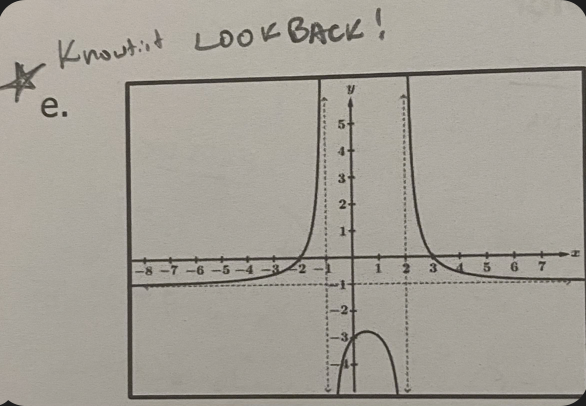
Write a limit statement
lim x → ∞ f(x) = -1
lim x → −∞ f(x) = -1
When do we have a slant asymptote?
When the degree of the numerator is one greater than the degree of the denominator
Slant Asymptote: Limit statement: a/b > 0
lim x → ∞ f(x) = ∞
lim x → −∞ f(x) = −∞
Slant Asymptote: Limit statement: a/b > 0
lim x → ∞ f(x) = −∞
lim x → −∞ f(x) = ∞
where is a root?
numerator term = 0
where are asymptotes?
denominator term = 0
roots
[, ]
asymptotes
(, )
WORK OUT PAGE 29
AP NOTES #8
< 0
only (,)
< 0
both (,) and [,]
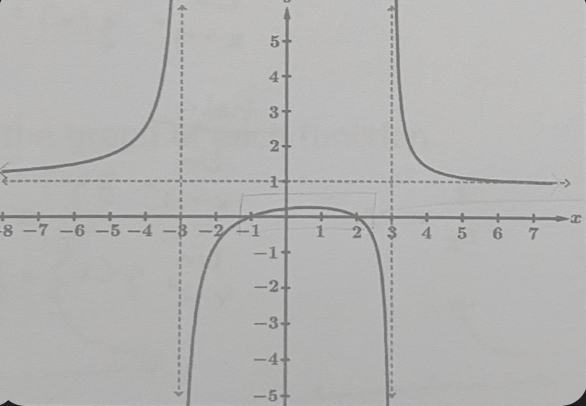
a. f(x) < 0
(-3,-1] [2,3)
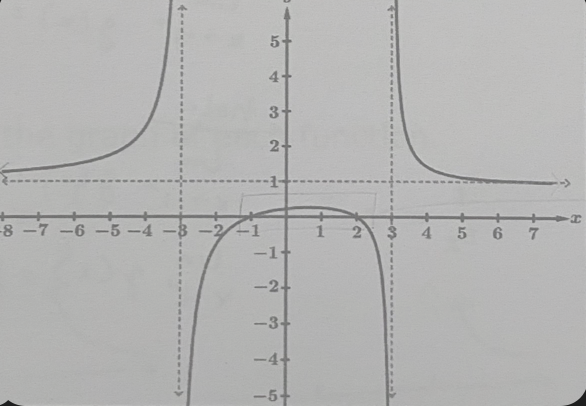
b. f(x) > 0
(−∞,-3) (-1,2) (3,∞)
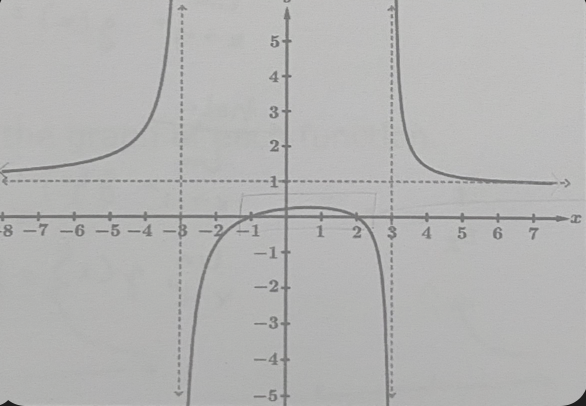
c. f(x) > 0
(−∞,-3) [-1,2] (3,∞)
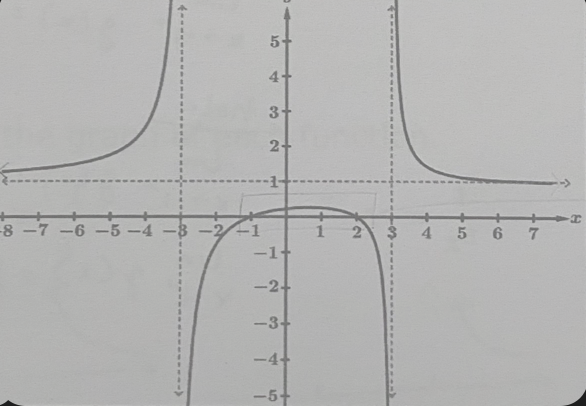
f(x) > 1
(−∞,-3) (3,∞)
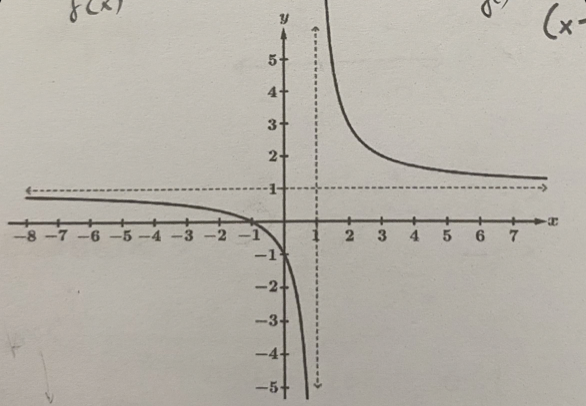
Find the equation g(x)
Identify the VA, write corresponding limit statements
Identify the Hole, write the corresponding limit statements
Equation: g(x) = 2(x-1)(x+2)/(x-1)(x+1)
VA: x = -1
lim x → -1^- g(x) = −∞
lim x → -1^+ g(x) = ∞
Hole: (1,3)
lim x → -1^- g(x) = 3
lim x → -1^+ g(x) = 3
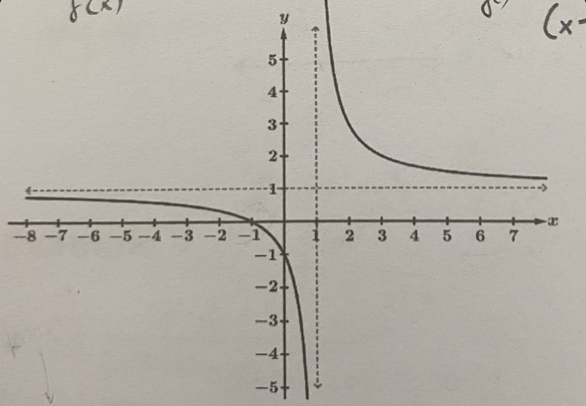
Find the equation f(x)
Identify the VA, write corresponding limit statements
Identify HA, write the corresponding limit statements
Equation: f(x) = (x+1)/(x-1)
VA: x = 1
lim x → -1^- f(x) = −∞
lim x → -1^+ f(x) = ∞
HA: y = 1
lim x → ∞ f(x) = 1
lim x → −∞ f(x) = 1
Write equations using a limit statement.
lim x→3^- f(x) = 5 lim x→3^+ f(x) = 5
lim x→1^- f(x) = −∞ lim x→1^+ = ∞
10(x-3)/(x-3)(x-1)
Write equations using a limit statement.
lim x→-2^- f(x) = 4 lim x→-2^+ f(x) = 4
lim x→-1^- f(x) = ∞ lim x→-1^+ = ∞
4(x+2)/(x+2)(x+1)²
HW #9
ON DELTA MATH
The multiplicity of an asymptote tells you what on a graph?
The arrow direction
Vertical Translation
g(x) = f(x) + k
Horizontal Translation
g(x) = f(x+h); remember -h units
Vertical Dilation
g(x) = af(x)
Horizontal Dilation
g(x) = f(bx); remember a dilation by 2 multiply the y co-od by ½ | if it were ½ multiply the y co-od by 2.
Reflection
if a < 0 reflection over x-axis
if b < 0 reflection over y-axis